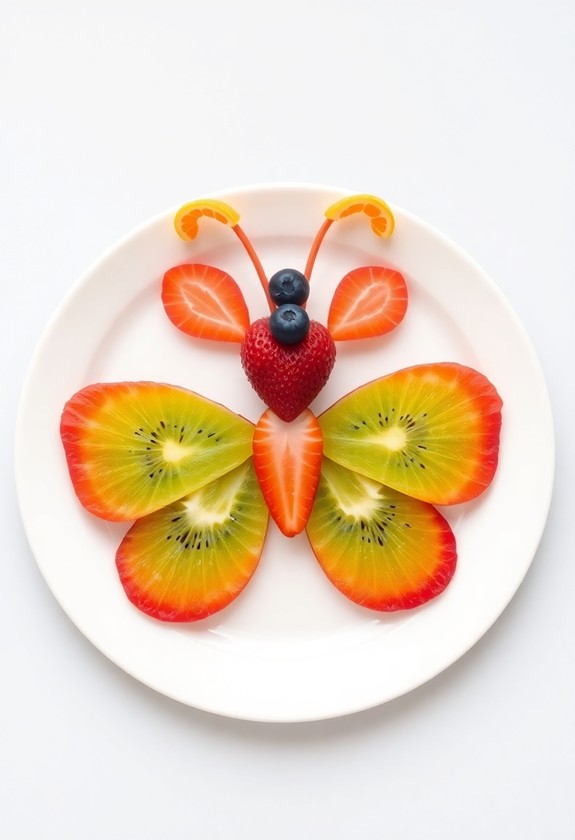Get ready for some messy, creative fun with your toddler! These 7 sensory art activities will spark their imagination and boost development: 1) Finger paint with textured paints, 2) Mold edible play dough, 3) investigate artistic sensory bins, 4) Create nature collages, 5) Print with bubble wrap, 6) Draw with scented crayons, and 7) Build tactile sculptures. Each activity engages multiple senses, promoting fine motor skills, cognitive growth, and emotional expression. From squishy dough to crunchy leaves, your little one will love uncovering new textures and materials. Plus, these activities are safe and easy to set up at home. Let's plunge into a world of colorful, tactile adventures that'll have your toddler giggling with joy!
Creative Highlights
- Finger painting with textured paints provides a multi-sensory experience, promoting sensory integration and emotional expression.
- Edible play dough creations offer safe, taste-friendly exploration while developing fine motor skills and creativity.
- Sensory bins filled with various materials encourage tactile exploration and enhance problem-solving abilities.
- Nature collages with found objects facilitate outdoor engagement and promote awareness of textures and colors in nature.
- Scented crayon drawing experiences combine visual and olfactory senses, improving cognitive functions and encouraging imaginative expression.
Finger Painting With Textured Paints

Immerse yourself in the world of sensory exploration with finger painting using textured paints. It's a hands-on adventure your toddler will love! Here's how to get started:
- Gather your materials:
- Washable, non-toxic finger paints
- Various texturing agents (sand, rice, oatmeal)
- Large paper or canvas
- Smocks or old clothes
This activity is particularly beneficial for children with Sensory Processing Disorders, as it helps nurture sensory integration and can reduce anxiety. The engaging sensory experience promotes emotional expression and stress relief.
Watch their faces light up as they uncover new sensations. The bumpy, gritty textures will tickle their fingertips and spark curiosity. Plus, it's a great way to introduce color mixing – it's like magic!
Edible Play Dough Creations
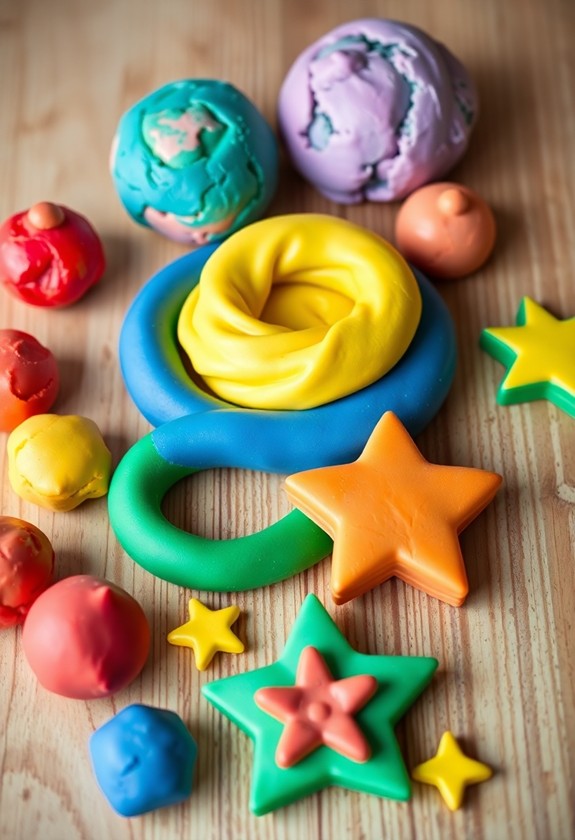
One of the most delightful sensory experiences for toddlers is creating and playing with edible play dough. It's safe, fun, and engages multiple senses at once! You can easily whip up a batch using simple ingredients from your kitchen. Multi-sensory experiences aid in memory retention and information processing, essential for early childhood development. Here's why edible play dough is fantastic:
- It's taste-safe, so no worries if your little one takes a nibble!
- The texture is amazing for sensory exploration
- It encourages creativity and fine motor skills
- You can add scents for extra sensory fun
To make it, mix flour, salt, water, and food coloring. Knead until smooth, and voila! You've got a dough-lightful creation! Let your toddler squish, roll, and mold to their heart's content. They'll have a ball (or a snake, or a star) with this squishy, edible masterpiece!
Sensory Bins for Artistic Exploration
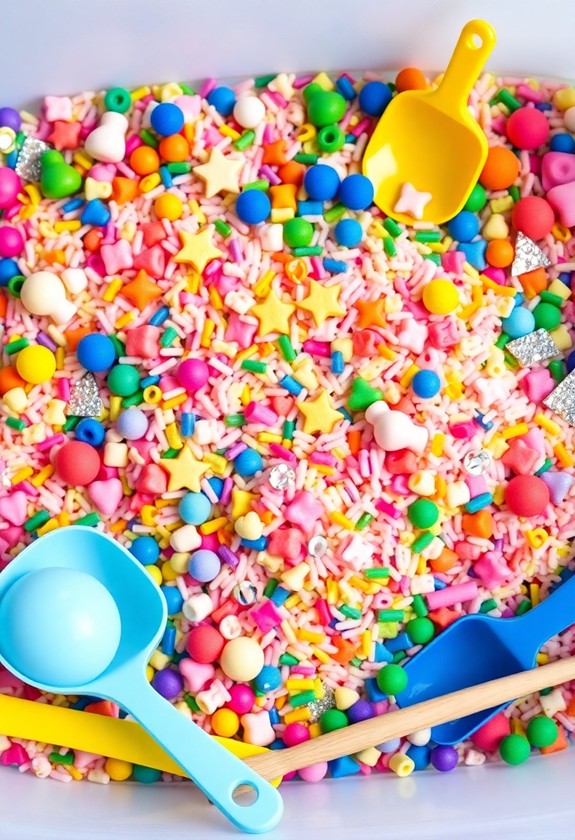
Moving from malleable dough to a world of diverse textures, sensory bins offer toddlers an expansive canvas for artistic immersion. These magical containers are brimming with possibilities! Fill them with:
- Colorful rice or pasta
- Soft pom-poms
- Smooth pebbles
- Crunchy cereal
Add tools like scoops, brushes, and mini rakes for extra fun! Your little Picasso will love investigating these tactile treasures. Watch as they create masterpieces by sorting, pouring, and mixing. It's a feast for the senses! Sensory bins are excellent for enhancing fine motor skills and encouraging problem-solving in toddlers. They additionally provide a safe, non-toxic environment for creative discovery.
To spice things up, try themed bins:
- Ocean adventure (blue rice, shells, toy fish)
- Farm frenzy (corn kernels, toy animals, mini hay bales)
- Space odyssey (black beans, stars, astronaut figures)
Nature Collages With Found Objects
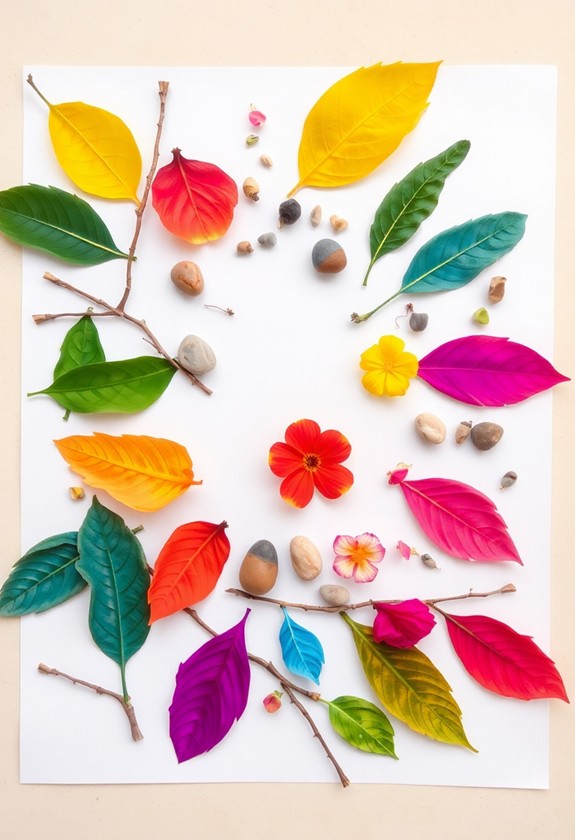
In keeping with the sensory theme, nature collages offer a hands-on approach to outdoor art. Take your toddler on a nature walk and collect leaves, twigs, flowers, and pebbles. It's a fantastic way to investigate textures and colors during the enjoyment of the fresh air! This activity additionally fosters language skills as children describe their findings and engage in social interactions during the collection process.
Back home, lay out your treasures and get ready for some sticky fun! Use child-safe glue to create a masterpiece on sturdy paper or cardboard. Let your little one's imagination run wild!
Nature collages aren't just fun – they're educational too! Here's what your toddler can learn:
- Colors in nature
- Textures of different objects
- Shapes of leaves and petals
- Seasons through changing materials
This activity is a sensory bonanza! From the crunch of leaves to the smooth pebbles, your toddler's senses will be in overdrive. Get ready for some natural artistry!
Bubble Wrap Printing Adventures

As nature collages bring the outdoors in, bubble wrap printing offers a unique sensory experience right at home. Get ready for some poppin' fun! Here's what you'll need:
- Bubble wrap
- Paint
- Paper
- Rolling pin
Start by cutting bubble wrap into manageable squares. Then, let your little one go wild with paint! They'll love squishing and spreading colors on the bubbly surface. Non-toxic, washable paints are ideal for this activity, ensuring easy clean-up and safe creative play. Now for the exciting part: place the painted bubble wrap on paper, bubbles down. Roll over it with a rolling pin, and voila! A beautiful, textured masterpiece appears.
But wait, there's more! Try these bubble-tastic variations:
- Use different bubble sizes for varied patterns
- Mix colors for a rainbow effect
- Create shapes by cutting the bubble wrap
Your toddler will be bubble-wrapped up in creativity!
Scented Crayon Drawing Experience
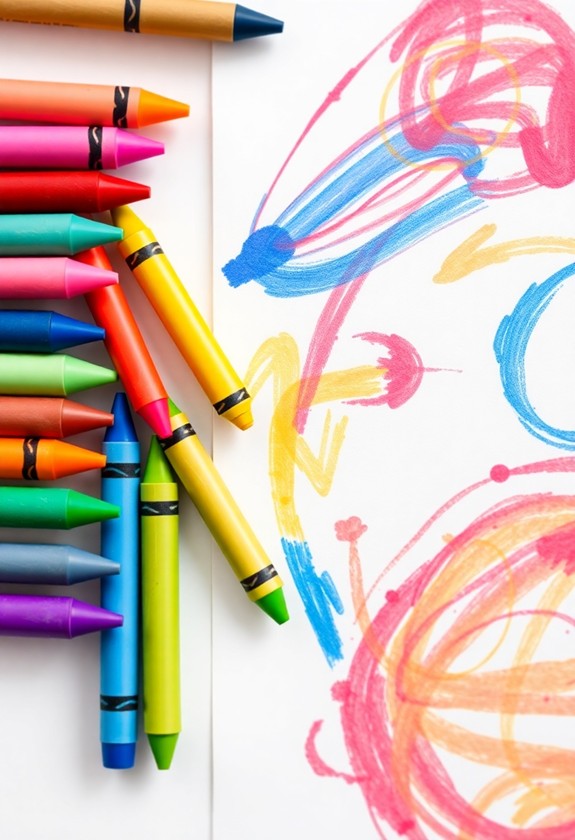
The aroma of creativity wafts through the air with scented crayon drawing. It's time to engage your toddler's senses in a whole new way! Grab some scented crayons and watch as your little one's eyes light up. They'll love the lively colors and delightful smells as they create their masterpieces.
Here's why scented crayon drawing is fantastic for toddlers:
- Improves sensory development
- Encourages creativity and self-expression
- Improves fine motor skills
- Boosts cognitive function through color and scent association
Let's get drawing! Spread out some paper and let your child investigate the smelly world of art. They might draw a lemony sun or a minty tree. Don't forget to join in the fun – it's a great bonding activity. And remember, there's no right or wrong in art. Let their imagination run wild!
Tactile Sculpture Building
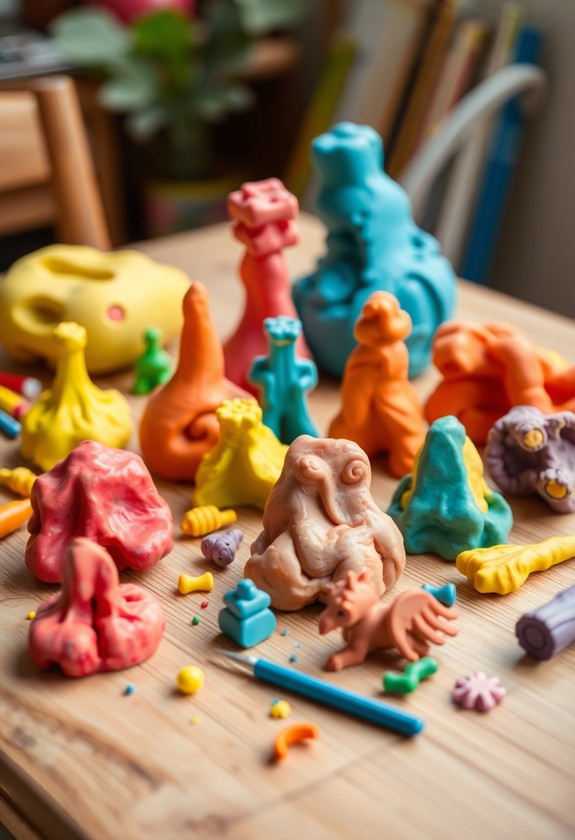
Let's shift our focus from 2D to 3D art with tactile sculpture building. This exciting activity will have your little ones squishing, molding, and creating in no time! Gather materials like play dough, clay, or even household items like sponges and cotton balls. It's time to get hands-on!
Here's how to make it a blast:
- Set up a comfy workspace
- Introduce different textures
- Demonstrate simple sculpting techniques
Encourage your toddlers to:
- Squeeze and roll the materials
- Stack and balance objects
- Poke and prod to create patterns
Watch as their imaginations run wild! They might craft a "squishy monster" or a "fluffy cloud castle." Remember, there's no right or wrong in art. The goal is to investigate textures and have fun. So, get ready for some tactile tastic adventures!
Curious Little Questions
How Can I Adapt These Activities for Toddlers With Sensory Sensitivities?
You can adapt activities for toddlers with sensory sensitivities by:
- Starting small: Introduce new textures gradually
- Offering choices: Let them pick materials they're comfortable with
- Using tools: Provide brushes or gloves for hands-off options
- Creating safe spaces: Set up quiet, low-stimulation areas
- Going slow: Allow extra time for exploration
- Praising efforts: Celebrate their participation, no matter how small
What Age-Appropriate Safety Precautions Should Be Taken During These Art Activities?
Safety first, fun second! As far as toddler art time is concerned, you've got to be on your toes. Keep those little hands clean and those curious minds engaged, but watch out for potential hazards! Here are some quick tips:
- Use non-toxic, washable materials
- Supervise closely – no wandering artists!
- Avoid small objects that could be swallowed
- Keep scissors child-safe and supervised
- Use smocks to protect clothing
- Have a first-aid kit nearby, just in case
How Can I Incorporate Music or Sound Into These Sensory Art Experiences?
You can totally jazz up your art activities with sound! Try these fun ideas:
- Play upbeat tunes during creating – it's a mood booster!
- Use noisy materials like crinkly paper or jingly bells
- Make shakers with dried beans in containers
- Investigate texture-sound combos (e.g., rough sandpaper = scratchy sounds)
- Create a "sound painting" by dripping paint to different rhythms
Music and art go together like peanut butter and jelly! It's a guaranteed way to engage multiple senses and make art time even more exciting!
Are There Any Eco-Friendly Alternatives for Materials Used in These Activities?
You might think eco-friendly art materials are hard to find, but that's not true! There are tons of great options. You can use:
- Natural items like leaves, twigs, and flowers
- Homemade playdough (flour, salt, water, oil)
- Recycled paper and cardboard
- Non-toxic, water-based paints
- Beeswax crayons
Get creative with household items too! Old sponges, string, and fabric scraps work wonders. And don't forget food! Berries make great paint, and pasta shapes are perfect for crafts. It's easy to be green and have fun!
How Can I Document and Preserve My Toddler's Sensory Art Creations?
You've got so many options to capture your little artist's masterpieces! Snap photos and create a digital album, or go old-school with a scrapbook. For 3D creations, try preserving them in clear resin or taking a video to showcase all angles. Don't forget to jot down funny quotes or reactions! You can even frame select pieces or create a gallery wall. Whatever you choose, you're building a collection of memories that'll make you smile for years to come!




